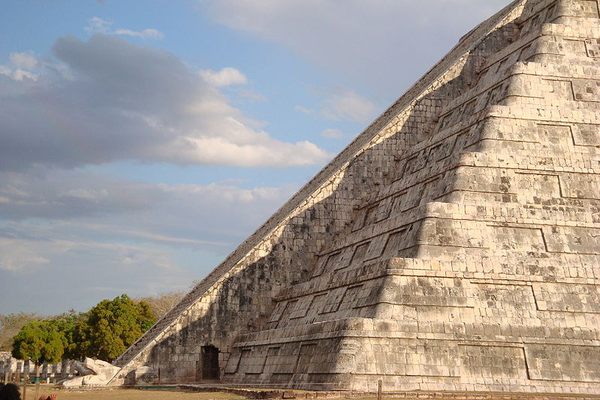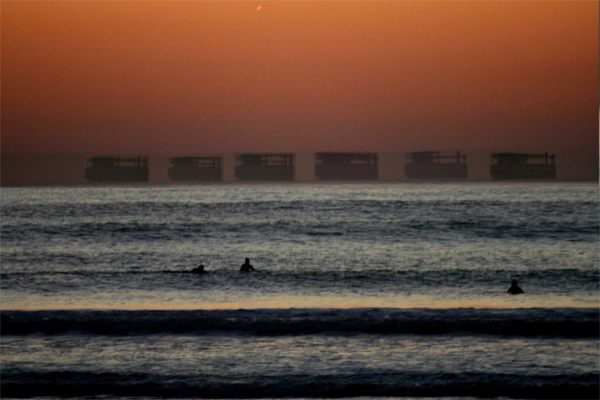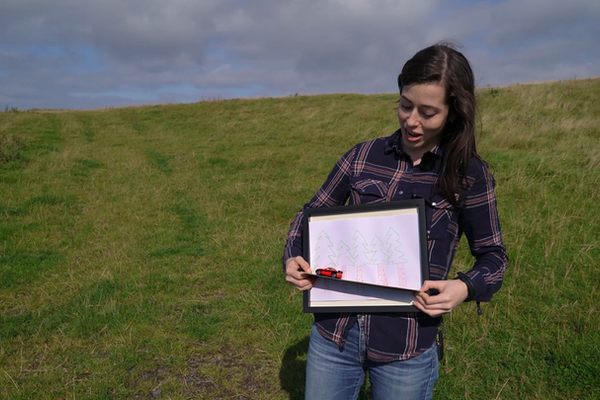Ghost in the Rainbow
31 Days of Halloween: On Atlas Obscura this month, we’re celebrating Halloween each day with woeful, wondrous, and wickedly macabre tales all linked to a real locale that you can visit, if you dare.
Illustration from “Great Disasters and Horrors in the World’s History” (1890) (source)
In the fog-shrouded heights of witch and demon haunted mountains of Northern Germany, generations of terrified hikers and early mountaineers have found themselves suddenly confronting an enormous figure, floating in the sky, surrounded by radiating circles of light.
 Scottish Mountaineering Club Journal, Volume 3, 1895 (source)
Scottish Mountaineering Club Journal, Volume 3, 1895 (source)
From Frank Richard Stockton in the 1910 Round-about Rambles in Lands of Fact and Fancy:
… it must be confessed it was a fearful sight to behold suddenly upon the summit of a lofty mountain an immense giant, sometimes pointing in a threatening attitude to a village below, as if dooming it to destruction; sometimes with arms upraised, as if invoking ruin upon all the country; and sometimes stalking along with such tremendous strides as to make but one step from peak to peak; often dwarfing himself to nothingness, and again stretching up until his head is in the clouds, then disappearing entirely for a moment, only to reappear more formidable than before.
The ghostly apparition which scared generations of hikers, inspired poets and writers, may have been the real source of holy and prophetic visions, and even led to the winning of the Nobel Peace Prize for one Glory seeker, is actually a complicated optical illusion.
This phenomenon, known as the “Brocken Spectre” after the German mountain where it has often been seen, is related to other atmospheric visual illusions like the Fata Morgana (in which objects appear to float above the horizon) and, most specifically, Glories (in which circles of light appear in mist). But most early witnesses were eager to attribute the vision to more otherworldly causes.
“Walpurgis’ Night” by Johann Heinrich Ramberg (1829) (source)
The Brocken mountain itself is steeped in dark myth and legend, home to legends of witches and demonic rituals since at least the 17th Century. It was here, on the Brocken, that Goethe set his Faust, complete with witches flying in on goatback:
Now to the Brocken the witches ride;
The stubble is gold and the corn is green;
There is the carnival crew to be seen,
And Squire Urianus will come to preside.
So over the valleys our company floats,
With witches a-farting on stinking old goats.
Poster for 1887 “Faust” production (source)
To this day, revelers head to the Brocken on Walpurgis Nacht at the end of April, where they can visit the rock formations known as the Teufelskanzel and Hexenaltar, or “Devil’s Pulpit” and “Witches’ Altar.”
Example of the alpine Brocken Spectre (photograph by Dmitry N. Zhukov)
With such an impressive pedigree, it is no wonder that German high-altitude seekers would easily attribute the sudden appearance of a giant floating figure with some dread, but of course, it can be explained. The Spectre itself is a combination of an optical phenomenon and an optical illusion. It works, roughly, like this:
The shadow of a person of object is projected from the sun behind them onto the clouds, in front, or below them. The shadow looks enormously enlarged, sometimes with the appearance of being hundreds of feet tall, due to a simple optical illusion having to do with the miscalculation of how far the surface of those clouds really are from the viewer. The halo effect, known as a Glory, occurs when the light of the sun hits a surface of uniformly sized water droplets. When you put both phenomena together, you get the Spectre.
The most common place to actually witness a Spectre is in flight, when your plane is often conveniently located between the sun and a nicely reflective cloud layer.
The airplane spectre (photograph by Brocken Inaglory)
In addition to scaring hikers since time immemorial, the Spectre illusion has been referenced by writers as diverse as Lewis Carroll, Thomas Pynchon, David Foster Wallace, and Carl Jung. But it has not only been a literary influence: the spectral figure also inspired Scottish physicist CTR Wilson to create his cloud chamber in 1911, in an attempt to create a Brocken Spectre of his own. His attempt to summon the phenomenon failed, but his invention led him to the discovery that the chamber could detect radiation. He won the 1927 Nobel Prize in physics for his Brocken-inspired discovery.
photograph by Baz Chapman
photograph by Keiichirou Shikano
photograph by markdavis/Flickr user
photograph by Damien Boilley
photograph by Roel Wijnants
photograph by meteomulhouse/Flickr user
photograph by Colin Campbell
photograph by Justin Kern
photograph by tw34k/Flickr user
photograph by Gerald Davidson
photograph by astronomyblog/Flickr user
photograph by Kamal Aboul-Hosn
Further Reading:
The Science of the Glory - Scientific American
SEE IT FOR YOURSELF
TEUFELSKANZEL AND HEXENALTAR, Brocken Mountain, Germany
OR GET ON A PLANE
Click here for more of our 31 Days of Halloween, where each day we’re celebrating the strange-but-true unsettling corners of the world.










Follow us on Twitter to get the latest on the world's hidden wonders.
Like us on Facebook to get the latest on the world's hidden wonders.
Follow us on Twitter Like us on Facebook